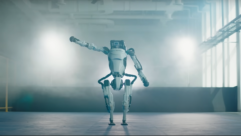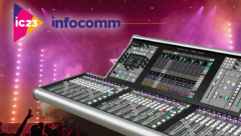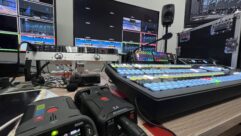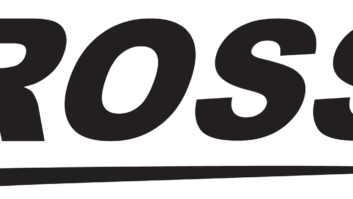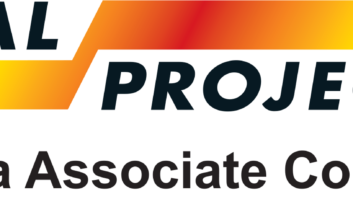
Coordinating Audio for Live Events, Part 2
Sep 23, 2010 11:59 AM,
With Bennett Liles
Listen to the Podcasts
|
Editor’s note: For your convenience, this transcription of the podcast includes timestamps. If you are listening to the podcast and reading its accompanying transcription, you can use the timestamps to jump to any part of the audio podcast by simply dragging the slider on the podcast to the time indicated in the transcription.
Related Links

Coordinating Audio for Live Events, Part 1
When one of the world’s biggest companies threw its annual party for employee’s this year, the company rented out Wembley Arena and hired Sound By Design to handle all sound systems and communications. …
The annual gathering for a multibillion dollar company is a huge bash, and when the event came to Wembley Arena, local company Sound By Design was called in to take charge of communications and sound systems for speeches, musical acts, and a few surprise performers. Phill Chapman and Dave Shepherd are here from London to rap up their talk about how they made it all work.
All right Phill and Dave, welcome back for part two, and we were talking about the Forever Living event in Wembley Arena and a whole slew of wireless stuff that you had to use—50 microphones and all kinds of wireless intercom and in-ear monitoring and all that stuff going on at the same time. We didn’t talk before about the FOH console. I believe you used a DiGiCo SD7. Why did you go with that particular one?
Shepherd: That’s correct. A lot of it came down just to the physical number of inputs; we went off with the FOH and monitor engineers to examine other desks and the closest was going to be the Midas Escalade. It’s a lovely sounding board and very usable but just physically a number of channels, and we ended up running the show at 140 inputs; most of which we had to have access to at any one point because it’s a very dynamic show and as things go on they’ll rearrange the order of the show and they suddenly put an act on which we’re not expecting at that particular time. We can’t be subject really to snapshots and everything; we just have to be able to have access to it. We also have a history with DiGiCo. They’re local to us [and] give us absolutely great support. And we also have the EX-007, which is a new extendable they have to be used as a playback desk. We had a playback operator out FOH as well as the main FOH engineer. But also the extension board gave him access to all the other channels as well so at key points of the show where we had the 30 members of the Grenadier Guards come on stage without any sound checks or rehearsals or anything, it meant the two engineers could work on that one particular act very easily, which was a great bonus. [Timestamp: 2:36]
Yeah, I love surprise performers. They always make things interesting and generate a lot of high volume conversation on the intercom too.
Both: Yeah.
I know we mentioned this in part one a little bit, but I’m interested in this. You had a lot of people on stage coordinating who’d get what mic and who handles what IM and things. What kind of a crew did you have there? Where were all your people or were you coordinating with somebody else on that?
Shepherd: No, all our guys there were regular freelancers that we use on all our bigger shows. It’s a team that I’ve used on this particular event for the last several years now, which they all know the event very well as well and they know the client. I’m very keen for my guys to have a good interaction with the end client as well; it makes for a much easier show. [Timestamp: 3:28]
And of course in an event like this there are going to be things, like we said, weren’t expected—little accidents that go on with all this wireless stuff and the hard wired mics too; you had a lot of those I guess. I’d think that one of the best things about a digital board, as you mentioned, was a snapshot, but you really don’t have that advantage on a show like this; there’re so many impromptu and surprise things going on, a lot of things that haven’t been rehearsed. How much time did you have to set up and sound check things?
Shepherd: There was technical rehearsals to the point of us testing all of the equipment for a day before the show because we were in the arena for about a week, about two or three day build to get everything in, and then a day of testing the equipment, but there was no actual full run through of the show. It’s a two-day event that runs all day long. The first day it starts around about 11 or 12 o’clock and goes on until about 7:00 in the evening, and the second day it starts at 9:00 and went on till 7:00 in the evening, and there’s no breaks in the show. There’s a lot of content to get through. So there are brief technical rehearsals to check key bites. We go into it fairly blind, but we do carry a lot of spares with us—some spare radios on the side if we need them, spare channels on the board if we need to put anything in. I don’t believe in maxing out anything; you have lots of spare space to go. It’s the only way to do it. [Timestamp: 4:50]
Yeah, I was going to say. Were there any casualties on the equipment list?
Shepherd: I don’t think we had any failures actually, no. Everything worked very well. We spent three days prepping it all in the warehouse as well so everything was tested thoroughly before it went out—every cable, it was all fleshed out. [Timestamp: 5.09]
Chapman: I think we blew up one cabinet in the warehouse before the show but nothing happened onsite …
Shepherd: Nah.
Chapman: … as far as I’m aware. [Timestamp: 5.14]
Oh, well, if you got to do it, that’s the place to do it I guess.
Chapman: Yes, absolutely.
So and of course there was a lot of stage monitoring.
Shepherd: Yes, we had a stage monitor engineer on the side of stage gain using DiGiCo SD7 purely and then the two desks could interface, and it works very well that way. [Timestamp: 5:32]
Coordinating Audio for Live Events, Part 2
Sep 23, 2010 11:59 AM,
With Bennett Liles
I understand that there were some, or potentially at least, were some RF problems created by a big LED wall. What was that about?
Chapman: Well, yes, as we said earlier, with the size of the LED wall that we had onsite and the fact that it was a dynamic LED wall in that it was moving and we had heard that there would be a few issues certainly with antenna placement and things like that. So we had to sit down and work out quite a plan of where we were going to put antennas and what antennas we were going to use. We were considering originally using helical antennas, the reason being [that they’re] very directional, but the stage ended up being quite deep, and we couldn’t quite get the coverage we wanted. So we had a group of standard directional paddle-type antennas crisscrossing across the stage trying to keep away from the LED wall, but in the end, it didn’t cause us a problem at all. I don’t know whether that was because we had good antenna placement or if someone was just a little over cautious in there for the issues that they had before, but no, it was all right for us in the end. [Timestamp: 6:40]
Chapman: Yeah.
Related Links

Coordinating Audio for Live Events, Part 1
When one of the world’s biggest companies threw its annual party for employee’s this year, the company rented out Wembley Arena and hired Sound By Design to handle all sound systems and communications. …
Yeah with RF set ups you never know. I don’t think any two are the same even if you try to make them be the same.
Chapman: No, absolutely yes.
So how’s the power amp and speaker management done there?
Chapman: Well, we used a Meyer Sound system, so nearly everything in sight was self-powered, so we don’t have any racks around so to speak. But all the boxes in the PA, the main PA at least and the delays, were linked up with Meyers Remote Monitoring system, which gives us realtime monitoring of each boxes and voltages, limiters, power outputs, temperatures, fan speeds, and things, and flashes up a any warnings if anything’s amiss, which is very useful especially when you have multiple drivers in each box in a big line array situation. And then the whole system was driven with the multiple Meyer Galileo management processors. And you had three of them didn’t you? [Timestamp: 7:37]
Chapman: Each one is 6 in 16 out, and it’s very useful in terms of allow; they’ve got quite a lot of power in-line driving. Obviously it’s got the usual like EQ and everything, but then it also includes Meyer’s air-absorption compensation and line array presets for all their different line array boxes, and that’s linked to the air temperature and humidity, so as the place warms up, we can correct for anything that may be doing to the overall EQ of the system. [Timestamp: 8:10]
And of course a lot of communication going on too behind the scenes, a lot of intercoms and walkies and things like that. How was the communication handled between FOH, stage monitoring, performers, and all that? Did you have people specially designated just to be communication people or relay the word here and there?
Shepherd: We actually had a standard shout system between FOH and monitors because we also supply all the coms for the show as well, the whole production coms as well, which was partly RTX dual-channel wire system but also using the HME wireless. We had the added benefit of I could issue four wireless HMEs to my sound crew, the stage techs, and people who not only could be involved in the production side or the production ring of the coms, it also allows us to input an audio signal into it separate to the production ring and take an audio feed out on a separate ring as well. So all the guys on HMEs actually were involved part of the FOH monitoring and shout system as well. So it was very easy for one of our guys to be on stage with a set of wireless coms on and talk to FOH quite happily. [Timestamp: 9:25]
And a lot of sound sources and lots of places for those signals to go. How was the mic line distribution done?
Shepherd: Well the core of it is DiGiCo’s optical system, an optical MADI loop, full loop, with full redundancy on it. So the monitor, engineer techs, all the gains set what could be adjusted by both desks, but it’s just one rack and both desks seek access to it all. [Timestamp: 9:50]
And I know all of this was a big live event. Did the company require any recording of this?
Shepherd: It was a fairly basic recording of the show, just the four tracks of separating of speech and any use of playback content. All the bands were on separate feed as well just so they can mix it, and then a separate feed of ambient mics as well. But it’s all very much a bore tape. It’s taken really just as a reference and was very quickly cut down to a small 9-minute thing that they put up on YouTube; it was to show the whole event. It’s a fairly basic recording of the show. [Timestamp: 10:24]
Yeah, I would guess that with this kind of event the whole thing is in the live deal.
Shepherd: So it’s streamed live to the Internet as well during the show, but we mixed that live from FOH as well. [Timestamp: 10:35]
OK, I think we were talking earlier about one of the little impromptu things with no rehearsal, a Grenadier Guards act. What exactly did they do when they came out? What did you have to do with them?
Shepherd: Well we weren’t really sure until actually a couple of days before the event what they were going to do. At one point they were going to be marching around the stage. It came very quickly apparently it was going to end up being a static event due to their commitments as well. They couldn’t make any rehearsal slots, so it was just a case of a conversation with them backstage before they went on to tell them roughly how they were going to line up on the stage, and this is where we use the wireless condenser mics; the mixtures of four and fours and AKG 480s as well. The team or the crew of the sound guys and using of the backstage helped as well. We could walk on with stereo pads of these mics and place them as they walked out on stage playing and just as they stood still, they got a mic clamped front to them and the FOH guys mixed it on the fly. [Timestamp: 11:38]
Chapman: It was about 30 seconds stage change wasn’t it? [Timestamp: 11:41]
Shepherd: Yeah.
Well that sounds like it was fun for everybody on stage and back there on the mixers.
Shepherd: Yeah, it was a bit of excitement. [Timestamp: 11:47]
What other kinds of projects do you have coming up? Anything special you’ve been looking forward to?
Chapman: We’re in the middle of one at the moment; our current largest project of the year usually is the BBC Proms, which is an annual eight-week classical music festival based predominantly in the Royal Albert Hall and a few other venues around London. It’s slightly smaller this year than it has been in the past, and the amount of our involvement is dictated by the theme of the season. Every year is themed slightly differently, and they don’t all require PA. Then we’ve also just started planning for another annual show that we do at Legoland Theme Park, which is their annual fireworks show which involves covering quite a fair chunk of the park in PA for music firework shows. So we always look forward to that one; it’s quite a headache thing. [Timestamp: 12:41]
Well thanks very much guys. Phill Chapman and Dave Shepherd of Sound By Design coming to us from London; wonderful having you on.
Chapman: Lovely, thank you.
Shepherd: It’s been a pleasure.


